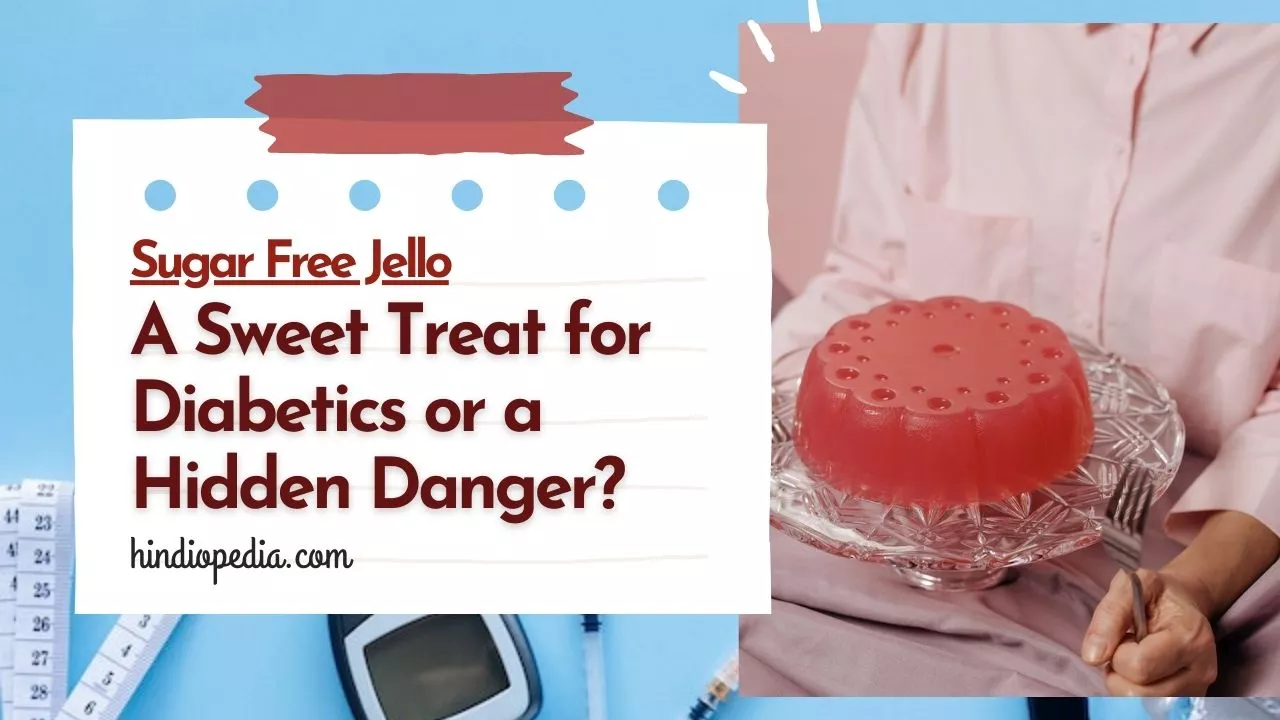Is Sugar-Free Jello Good for Diabetics? What You Need to Know
Jello is a popular dessert that comes in many flavors and colors. It is made from gelatin, water, sugar, and artificial flavors and colors.
Jello is low in fat and protein, but high in sugar and carbohydrates. This makes it a poor choice for people with diabetes, who need to control their blood sugar levels and avoid foods that spike them.
However, there is an alternative to regular jello that claims to be sugar-free and low in calories. Sugar-free jello is a product that uses artificial sweeteners instead of sugar to provide sweetness.
If you have diabetes, you may be wondering if sugar-free jello is a good choice for a dessert or a snack. After all, it has zero carbs, zero calories, and zero sugar, right?
Well, not exactly. Sugar-free jello may have some benefits for diabetics, but it also has some drawbacks that you should be aware of.
In this blog post, we will briefly discuss whether sugar-free jello is good for diabetics along with its benefits and drawbacks so that you can make an informed decision before taking Sugar-Free Jello if you have diabetes.
Benefits of Sugar-Free Jello for Diabetics
Sugar-free jello has some benefits for diabetics that make it a better option than regular jello.
Here are some of them:
#1 It has fewer calories and carbohydrates than regular Jello
A serving of regular jello (half a cup) has about 80 calories and 19 grams of carbohydrates, mostly from sugar.
A serving of sugar-free jello (half a cup) has only 10 calories and 0 grams of carbohydrates. This means that sugar-free jello will not raise your blood sugar levels as much as regular jello, and will also help you control your calorie intake if you are trying to lose weight.
#2 It can help you satisfy your sweet tooth without the guilt
Many diabetics struggle with cravings for sweets, especially after meals.
Sugar-free jello can be a good way to satisfy your sweet tooth without consuming too much sugar or calories.
It can also help you avoid other desserts that are higher in fat, such as cakes, pies, or ice cream.
#3 It can provide some hydration and electrolytes
Sugar free jello is mostly made of water and gelatin, which can help you stay hydrated and replenish some electrolytes that you may lose through sweating or urination.
Electrolytes are minerals that help regulate your fluid balance, nerve function, muscle contraction, and blood pressure. Some common electrolytes are sodium, potassium, calcium, magnesium, and phosphate.
#4 It can be a source of collagen
Gelatin is derived from collagen, which is a protein that is found in connective tissues such as skin, bones, cartilage, tendons, and ligaments.
Collagen has many health benefits such as improving skin elasticity, reducing wrinkles, strengthening bones and joints, healing wounds, and supporting gut health.
Sugar-free jello can provide some collagen to your diet, which may help you improve your overall health and appearance.
Drawbacks of Sugar-Free Jello for Diabetics
Sugar-free jello is not a perfect dessert for diabetics. It also has some drawbacks that you should be aware of before consuming it.
Here are some of them:
#1 It contains artificial sweeteners that may have negative effects on your health
Sugar-free jello uses artificial sweeteners such as aspartame, sucralose, acesulfame potassium, or neotame to provide sweetness without calories or carbohydrates.
However, these sweeteners are not natural and may have some negative effects on your health. Some studies have linked artificial sweeteners to increased appetite, weight gain, metabolic syndrome, type 2 diabetes, cancer, headaches, mood disorders, and gut microbiome imbalance.
However, these studies are not conclusive and more research is needed to determine the safety and long-term effects of artificial sweeteners.
#2 It may not satisfy your hunger or satiety
Sugar-free jello is low in calories, carbohydrates, fat, and protein. This means that it will not provide much energy or nutrients to your body.
It may also not fill you up or keep you satisfied for long. You may end up eating more food later or snacking on other foods that are higher in calories or carbohydrates.
This can lead to overeating and weight gain over time.
#3 It may contain other additives that are unhealthy or allergenic
Sugar-free jello also contains other ingredients that are used to enhance its flavor, color, texture, and shelf life.
Some of these ingredients are disodium phosphate, adipic acid, fumaric acid, artificial flavors, and artificial colors.
These additives may have some negative effects on your health such as causing inflammation, acidity, kidney problems, or allergic reactions.
Some people may also be sensitive or intolerant to some of these ingredients and experience symptoms such as bloating, gas, diarrhea, nausea, or headaches.
How to Enjoy Sugar-Free Jello Safely and Moderately
Sugar-free jello can be a good dessert option for diabetics if consumed safely and moderately.
Here are some tips on how to enjoy sugar-free jello without compromising your health or blood sugar levels:
#1 Choose sugar-free jello that has the least amount of artificial sweeteners and additives
Read the nutrition labels and ingredient lists of sugar-free jello products and compare them.
Choose the ones that have the least amount of artificial sweeteners and additives. Avoid the ones that have maltodextrin, which is a type of carbohydrate that can raise your blood sugar levels.
Also, avoid the ones that have artificial colors or flavors that you are allergic to or sensitive to.
#2 Limit your portion size and frequency of consumption
Sugar-free jello may have fewer calories and carbohydrates than regular jello, but it is still not a nutrient-dense food. It does not provide much energy or nutrients to your body.
It also contains artificial sweeteners and additives that may have negative effects on your health if consumed in large amounts or frequently.
Therefore, limit your portion size to half a cup or less per serving and your frequency of consumption to once or twice a week or less.
#3 Pair it with other foods that are high in protein and fiber
Protein and fiber are two nutrients that can help you feel full and satisfied after eating. They can also help you regulate your blood sugar levels and prevent spikes or crashes.
Therefore, pair your sugar-free jello with other foods that are high in protein and fiber such as nuts, seeds, yogurt, cheese, eggs, meat, fish, beans, lentils, fruits, vegetables, or whole grains.
This will make your dessert more balanced and nutritious.
#4 Make your own sugar-free jello with natural ingredients
If you want to avoid artificial sweeteners and additives altogether, you can make your own sugar-free jello with natural ingredients at home.
All you need is unflavored gelatin powder, water, natural sweeteners (such as stevia, monk fruit extract, erythritol, or xylitol), and natural flavors (such as lemon juice, vanilla extract, or fruit puree).
You can also add some natural colors (such as beet juice, turmeric powder, or spirulina powder) if you want.
Here is a simple recipe for homemade sugar-free jello:
Does Sugar-Free Jello Spike Insulin?
Yes, sugar-free jello may cause an increase in insulin levels in some people, because it contains maltodextrin, which has a high glycemic index and may induce an insulin response.
However, this may vary depending on the individual and the amount of sugar-free jello consumed.
Summary
Sugar-free jello may be a good option for diabetics who want a low-carb and low-calorie dessert or snack once in a while.
However, it should not be consumed regularly or in large amounts, as it has no nutritional value and may have some drawbacks due to its artificial ingredients.
If you want a healthier and more satisfying alternative, try making your own sugar-free jello with natural fruit juice and unflavored gelatin powder, or opt for fresh fruits that are rich in antioxidants and fiber.
The Bottom Line
I hope this blog post was helpful and informative for you and it helped you learn whether Sugar-Free Jello is Good for Diabetics.
If you have any experience with Sugar-Free Jello, feel free to share your experience in the comments below.
We would love to hear from you.
Thank you for reading and have a great day!




